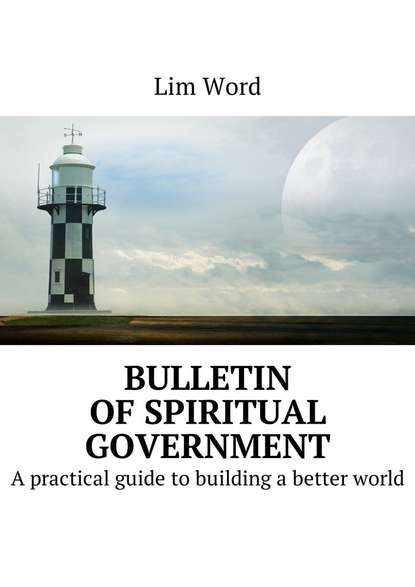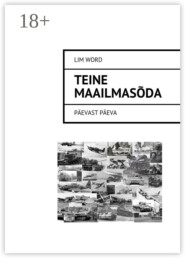По всем вопросам обращайтесь на: info@litportal.ru
(©) 2003-2024.
✖
Bulletin of Spiritual Government. A practical guide to building a better world
Настройки чтения
Размер шрифта
Высота строк
Поля
1) Throne (altar, from the Latin altarium, “high”, pommel of the altar). The name is common in the Orthodox tradition. In Ancient Greece, the altar (a powerful stone foundation) is essentially the temple itself. The Throne of the Eastern Church is approximately equal to the altar of the Western Church.
The Orthodox throne is a square table, the seat of God’s presence. Here are the sacred relics. (1) – antimins, scarf, with the sign of the cross, with stitched parts of the relics, as well as the signature of the bishop of the diocese, to which the temple belongs. Antimins is a document authorizing the celebration of the Liturgy. When the service is performed, the antimension unfolds, a chalice and a discus are placed on it – vessels for wine and bread, necessary for communion. Only the priests in full service clothing can touch the scarf, or (at the time of out-of-worship service) with a ribbon trimmed (Greek επιτραχήλιον – that around the neck). In certain cases, due to its strength, the antimension can replace the throne itself.
(2) The Gospel (New Testament).
(3) One, or more often two, of the altar cross. Crosses are used for the celebration of the Liturgy, for the blessing of the prayers, for the blessing of the water for the Epiphany, and especially for solemn prayers.
(4) The tabernacle (kiwot). The sacred vessel, the casket, where the holy Gifts are stored – the Body and Blood of Christ, used for communion (Eucharist, from other Greek εὐ-χᾰριστία – thanksgiving, honor, gratitude). The body is round, somewhat bifurcated, as a sign of the divine and human nature of Jesus Christ, reminiscent of the seal of a piece of bread, a prosphora (προσφορά – “offering”), is made from wheat flour, with yeast, water and salt. Wine – in Orthodoxy usually red, sweet (Cahors). In the Latin rite, liturgical bread is called unleavened bread, a guest (Latin hostia – “sacrifice”), or a robe (Latin oblatio – offering, offering, gift), it is baked exclusively from flour mixed with water, and resembles a thin coin. Wine, as a rule – white.
A consecrated, functioning temple, ideally – a place where the sky descends to the earth. You can add that the difference between the temporary and the transcendent, the eternal, disappears, one can feel the infinity of taste, so that he begins to like it.
The sacraments of the Eucharist consist of a) proskomedia (Greek “offering”), when the priest, after reading the prayers for the sending of the Holy Spirit, in the presence of many believers, but also with the closed Royal Gates, prepares the Blood and the Body on the Throne. Wine is mixed with water and poured into the chalice. Prosfora is cut with a special copy – a ritual double-edged knife with a triangular blade. c) Liturgy of catechumens (taught in the faith, as well as penitent and excommunicated). In the Great Litany (Greek “extended prayer”), global (then first) global, then smaller, general church and social, then personal petitions are raised. a) Liturgies of the faithful (there are only persons who have accepted baptism). The prepared Holy Gifts are solemnly transferred from the altar to the throne through the North Gate: before the iconostasis, believers. After that, the Royal Gate closes, the altar curtain is pulled up. The remaining priests read the eucharistic prayer anaphora, after which the Woof (lifting upward) of the Holy Gifts takes place. At this moment, mysteriously, wine and bread are converted into the Blood and Body of Christ.
The priests take communion, then they receive the Holy Mysteries of Christ and the laity.
In the Roman rite the Eucharistic Liturgy is called the Mass (perhaps from the Roman missio – mission, message). There are no fundamental differences. The service is conducted in Latin.
2) The altar. A quadrangular table, hidden in the same “clothes” as the throne, to the left of the high place (the northern part of the temple). The location of the sacred vessels, as well as bread and wine – gifts of Christians, suitable for the celebration of the Eucharist. In between the services, he closes the veil.
The upper part is a part of the Orthodox church opposite the throne, near the central part of the eastern wall. In a small niche, on a certain elevation there is a pulpit (throne, a high altar) for the bishop. The throne is surrounded by a semi-circle of seats (synthron) of priests of lesser rank. In some parish churches, the place is designated more only by an icon lamp, or by a tall candlestick with candles.
3) Altar. The space between the semicircular (eastern) wall is an apse and the iconostasis.
4) Ponomar (northern), it is sometimes “paradise”, because of the usual themes of the painting, the door in the iconostasis.
5) Sacristy (a storage room, a deacon). Place in the altar, several cabinets, or a separate room for storing the liturgical garb of priests and church utensils.
In the sacristy lead the southern, otherwise, the deacon’s doors of the iconostasis.
The spiritual person in charge of the sacristy is a sacristan. In Catholic churches, the sacristy is also called sacristy (Latin sacrum – sacred utensils). Mass begins with the solemn release of the clergy from sacristy. Here you can privately talk with a clergyman.
Ponomar – other Greek. παραμοναριος – “gatekeeper”, he is an altar boy, sexton, a servant of the Orthodox Church, obliged to ring bells, sing in the choir (elevations on the sides of the salt), monitor the order, serve during worship.
Deacon – from other Greek. διάκονος – minister of the first, inferior priesthood degree. Below him in the church hierarchy is only the clerk, the subdeacon is a cleric (he is a true believer, but not ordained as a parishioner). The deacon does not have the right to perform the sacraments himself. Appeal to the deacon on solemn occasions: “Your gospel”, “Your loud voice”, or “Your God-love”.
6) The iconostasis. In Orthodoxy – an altar partition consisting of rows of icons, separating the temple (parishioners) from the altar, respectively, the priests, and the ritual of the priesthood. In the Western tradition, there is no such clear separation of the people from the hierarchs.
7) Clears (from other Greek κλῆρος – getting a place or land by lot). Elevation, sometimes partially enclosed, for singers or readers. Sometimes a choir of choristers is called “choir”.
8) Salt (from the Latin solum – flat place, foundation). Raising the floor before the altar barrier or the iconostasis. In the front part of the saltwater there is the pulpit (another Greek ἄμβωνος – “ledge, elevation”) with the chair (other Greek καθέδρα armchair, throne), a symbol of the authority of the bishop, or, in the Catholic and Protestant temples – sacred texts.
9) The middle part of the temple. A place for parishioners. In orthodox (orthodox) churches, the service is accepted standing, in Roman Catholic and Protestant – sitting on benches (sometimes, on the sign of the priest, rising).
10) The porch (from the Latin praetorium, place for the praetor tent, later – the central square of the city). Passage part of the temple, vestibule. In the pre-Niconian Orthodox Church, the vestibule is usually very capacious, designed for a joint meal, gathering people during any emergency, warming pilgrims in the cold season (days), etc.
11) Candle box, literally – a church shop. Theoretically, trade here does not happen, but donations are made to the temple. In theory, in case of extreme need, you can ask for a candle for free. Practically, (nowadays) trade in various goods (wine, candles, books), including quite secular calendars, paintings, is also being conducted in the middle part of the temple.
12) The porch (from the Latin atrium, ater – “smoked”, “black”, the room blackened by soot, or from the Latin pauper – “poor”) – a platform in front of the inner porch of the church, in which in the first centuries of Christianity there were crying and repentant. The first temple elevation. Usually in the middle of the porch there was a pool in which believers washed their hands and face, before entering the church. The usual place for beggars to ask for alms.
3. Symbolic meaning of the architecture of the temple:
1) The porch. The face of the earth’s being.
2) The stages of the ascent from the earthly to the heavenly.
3) The heavenly realm of earthly existence
4) Visible Sky
5) The main part of the temple
6) Amvon – the region of representation (meeting) of each other to Heaven and Earth
7) The dome above the altar is a symbolic and real Kingdom of Heaven
8) The throne is the throne of the Heavenly King
Protestant churches (temples), despite their influence (the United States, England, in all around the world 800 million people), usually do not differ richly decorated. There is no icon-worship, veneration of the relics of the saints: accordingly, there are no icons in the building, or arches with relics. Attitude to the saints, at the same time, respectful. The building of the church can be any leased public building. In the altar there is a table stretched across the hall, with books of the Old and New Testaments, and lamps. Here, with the sermons of the Padres (the Father), the liturgy, communion and baptism are held. The two sacraments are the only ones recognized by this denomination. Much attention is paid here to solving the worldly problems of parishioners, unraveling family conflicts, quarrels of neighbors, etc. (faith without deeds is dead). Protestants (from Latin “publicly proving”) are usually not in some kind of confrontation with the Jewish religion, such as Orthodox and Catholics, see the state of Israel as an important field of God’s activities until the second coming of Jesus Christ.
The priest, as a rule, is elected, from among the most respected parishioners. Apostolic succession (elevation to the rank through ordination, that is, consecration) is absent.
4. The synagogue (the other Greek “assembly”, or the Hebrew beyte knes – “house of assembly”, it is also “meadat meat” – “small sanctuary”) – the place of public worship, the center of religious life (Jewish) community.
1. Entrance, a place for a washbasin (washing of hands). On the door frame is attached a case with a fragment from the Torah, mezuzah – before it the parishioner should be touched. This case can be recognized by the initial letter, one of the names of God – “Shaddai”, somewhat resembling the Russian “Sh”. This (but not necessarily mandatory) rule extends to private Jewish dwellings. Married women enter the sanctuary, usually with something covered (wig, headscarf, etc.) head and. Women’s pants, calling clothes, neckline – are not welcome. Men are wearing a headdress in the synagogue (and, in general, outside it): it is a symbol of recognizing the power of God.
2.3. Prayer rooms on the edges of the prayer hall. Sacred texts, relics, memorable photographs can be placed here. This interior helps to increase the useful area of the walls of the sanctuary, and also creates conditions for more trusting communication among parishioners, including discussion of earthly matters, etc. Men and women, usually only during prayer, gather separately. This custom does not work during a festive meal or a concert (once again, yes: the synagogue, in spite of its high sacral value, is not the Temple, but only the House of Assembly).
4. Bima or almear. The elevation in the center of the synagogue, with a table where the chosen minister (rabbi, hazzan, or another worthy parishioner) reads the Torah and (usually the final public reading) excerpts from the book of the Prophets – Gaftary. Sometimes readers (called by parishioners) can replace each other.
5. In some cases, the bima has a fenced passage to the synagogue ark (6), or merges with it. In this place are located lamps.
6. The Synagogue Ark, Hebrew. aron kodash. The symbolic reflection of the Ark of the Covenant, the cabinet in which the Torah scrolls are located. When you open the doors of the ark, those present, if they sit, stand up. The most important prayers are pronounced before the open (Celestial Gate) cabinet.
7. Above the ark is the Unquenchable lamp, ner tamid, the symbol of the Menorah, the oil (golden, seven-barrel) lamp of the Temple. Neramid, ideally, should burn all night, just like the Menorah in the Temple, and (preferably) also a day.
5. Mosque (the Arab “place of worship”). The first mosque is a cubic building in Mecca, Kaaba (Arab “Cube”), or also “Beitou-Llah” – “House of God”. During the annual hajj (pilgrimage), believers seven times bypass the sanctuary (ritual tawaf – “circumvention”), pronouncing prayers, asking for mercy and forgiveness.
Inside the Kaaba there are three columns; two lamps, a table, walls and floors made of marble. The upper inner walls of the Kaaba are closed by a curtain on which the shahada is written. Shahada, the symbol of the faith of Muslims, reads like this: “I testify that there is no other God except Allah, and I also testify that Muhammad is the Messenger of Allah.”
The meaning of the last words is the rejection of other beliefs in the same spirit, from the multitude of other preachers who preach their teachings in pre-Islamic times, and so interfere with each other.
1) Pond for bathing before prayer (prayer).
2) The main prayer hall (for men). Ahead are the venerable elders, then to the entrance – middle-aged people and youth. The floors are carpeted. On the walls are excerpts from the Koran. Images of living beings are forbidden. Namaz includes waist and earthly obeisances (sitting on the knees), praising Allah (“Allahu Akbar”), lifting palms to the sky, while thumbs touch the earlobes, reading the suras of the Koran …
3) For women, a separate room is set up, or a balcony with an opaque curtain.
4) Minbar – tribune, the department with which the imam reads Friday’s sermon. The Imam – “standing in front” is also “an example for imitation” – a clergyman, the head of the mosque, who directs the general prayer, performs the rites.











